
I remember the first time I saw my pet. Jinkee and her brother were in their bed, two tiny sausages just four weeks old. I had asked the breeder if I could visit before choosing my puppy as I didn’t like the idea of shopping for one online.
I knew I was in the right place as soon as we arrived. Jinkee was born first and you could tell — she was already so cheeky, trying to explore without quite figuring out how to walk properly yet. The little noises she was making broke my heart!
What I love most about my pet is … her ability to turn every day into a good one and make you instantly forget about any problems. She does it on a daily basis not only at home, but also for tens of thousands of people all around the world through her Instagram account, @LifeOfJinkee.
We spend time together often. “Often” is an understatement — how about “always”. I work from home so most of my day involves Jinkee being asleep on my lap. When she’s not resting her eyes, she’s either throwing toys at my feet trying to drag me away from the computer or accompanying me to a cafe.
The place my pet loves the most is … a tie between the beach and our bed. At the beach, she heads straight for the smelliest patch of seaweed. In winter, when my fiancé and I get up in the morning to go to the gym, she stays in bed, tucked in with her head on the pillow like a human.
The dog essential I could not do without is … practically speaking, Jinkee’s slicker brush — Toy Poodles don’t moult but you need to brush them daily to prevent matting. Aesthetically speaking, she has the most amazing denim vest by PetHaus, decorated with her own line of PinstaPals doggy fashion pins.
For more information on Jinkee, check her out at instagram.com/lifeofjinkee, facebook.com/lifeofjinkee or pinstapals.com
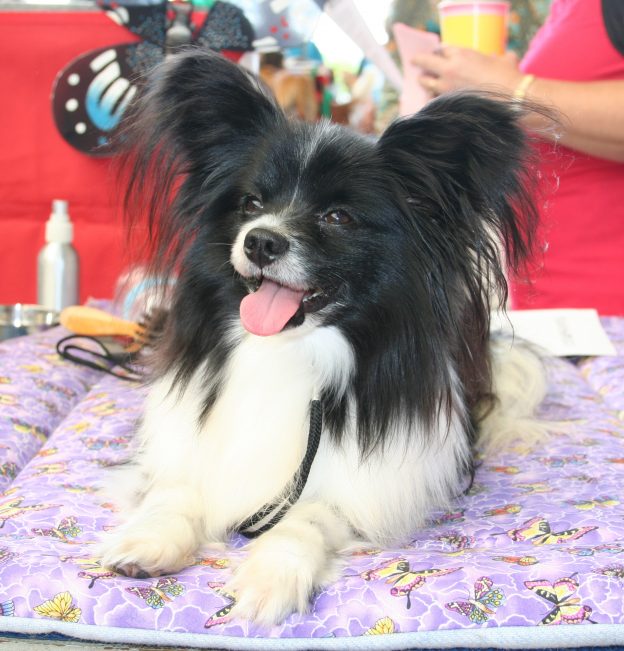
Originating in Europe around the 17th century as a companion dog, the Papillon (pronounced ‘pap-e-on’) had many admirers including Marie Antoinette, the Queen of France. These days the Papillon is found in countless homes around the world and with its happy disposition, alert expression and keen attitude wrapped into such a small, pretty dog, it is easy to see why.
Jean Rimmer of the Papillon Club of NSW Inc has loved the breed for many years and has been breeding Papillons since 1974. “Papillon is French for butterfly and the Papillon is always on the move, flitting from place to place,” she says. Papillons crave human attention and are great for people who enjoy spending time with their dogs. “The ideal owner is a caring, gentle person who is willing to have their Pap as part of their family,” Rimmer says.
The breed makes a lively companion, adds Rimmer, but due to their small size, Papillons are better suited to families with older children.
“I personally prefer them not to be with children under about 10 years of age,” she says, “as I find that children any younger are inclined to drop small dogs and the possibility of injury is rather high. But, having said that, there are exceptions with children who have been raised with dogs and who understand the proper way of handling such small dogs.”
A devoted family member, the Papillon enjoys spending time with the family, whether that be watching TV, going for a walk or playing in the yard. It is a small, dainty dog but is also alert and lively, and loves getting out and about with the family.
“They do like going for walks and playing ball in an enclosed yard,” Rimmer says. However, they will not take kindly to being left alone in the backyard for long periods of time and must be allowed in the house with the family. Being an intelligent breed and willing to please, they can be lead and house trained quite quickly. Given positive, fun training, they can also excel at obedience. Williams adds that the breed also competes well in agility and flyball.
A big dog in a little dog’s body, the Papillon is not aggressive but will keep a lookout for strangers and alert his family if there is anything unusual happening on his property. “They are very alert and will soon let you know if there is someone around who should not be there,” Williams says.
Papillons are not only alert, friendly, intelligent and beautiful-looking dogs, their long silky coats are relatively easy to maintain. They have no undercoat and possess little to no doggie odour, making them the perfect small house dog. “There is not a lot of grooming involved,” says Rimmer, “perhaps a good weekly brush to make sure there are no knots in their coats or ear fringing.”
For a small, dainty dog the Papillon is quite robust, but like most breeds can suffer from certain hereditary problems. “You may occasionally come across a Pap with slipping patellas,” warns Rimmer, “but as a rule a majority of the registered breeders these days are very careful about their breeding programs and would not consider breeding with any affected stock.”
If you are interested in adopting a Papillon, research the breed further by speaking to registered breeders or local breed club representative or visit some conformation/agility/obedience shows in your area.
If you do decide the Papillon would be perfect for your family and lifestyle, remember to treat your dog with love and kindness and you will have a charming companion for life.
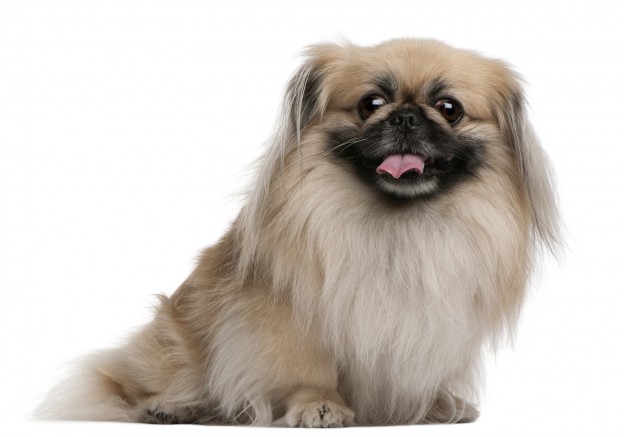
Pekingese Personality:
Though they can be stubborn and jealous, Pekingese are devoted one-person dogs, and are very affectionate with those they respect. They are intelligent, are relatively easy to train and, if properly socialised, can become fast friends with other household pets. Pekes enjoy the finer things in life, and aren’t as boisterous as other oriental breeds.
Suitable for:
Pekingese appeal to a wide range of people, from young adults to the elderly. Their manageable size makes these dogs an ideal house pet, though they’re not ideal for a home with boisterous young children.
Favourite activities:
The Pekingese is often presumed to be inactive and slow because of its size and long coat. But while these dogs enjoy the quiet life and will happily spend their days curled up at their owners feet, they are in fact very athletic and can keep up with much bigger breeds. Their short, bowed legs known as Queen Anne legs make for a unique gait.
Watchdog qualities:
Pekes have good hearing and are staunchly protective of their beloved owners, but are primarily bred to be lap dogs, so aren’t ideal watchdogs.
Hereditary diseases:
A common cause of death for Pekingese, as for many toy breeds, is congestive heart failure. When diagnosed early, it can be successfully treated with medication. They can also experience eye and breathing problems due to their small skull and flattened face.
It is testament to the cheeky charm of the Pekingese that, after more than a decade of breeding and showing Pugs, Maree Grundy was moved to bring her first Peke home to her Tasmanian kennel.
With her parents involved with Pugs for more than 40 years, Grundy had a lifelong love of the breed. She could have been forgiven for turning a blind eye to other breeds, yet it didn’t take long for the Pekingese to capture her heart.
I’ve been breeding and showing Pugs since 1989, and branched out into Pekingese in 2000. A friend of mine has been breeding and showing Pekingese for many years, and as a breed they had always appealed to me I like the oriental breeds generally, Grundy recalls.
I started showing a male for my friend in 2000 and he gained his Australian Championship title quickly here in Tasmania. By that time, I was hooked on this wonderful breed and obtained a male of my own to show.
Fast-forward eight years, and Grundy’s gaggle of Pugs now has four Pekingese siblings two males and two females.
Ancient origins
The origins of the Pekingese are steeped in myth and mystery. A popular Buddhist legend says the breed sprang from a love affair between a lion and a marmoset. The lion went to the Buddha, lamenting his large size, and Buddha allowed him to shrink to the size of the marmoset the Pekingese was reputedly the result. To this day, Pekes are also commonly known as lion dogs.
Mystical or not, the Pekingese is undoubtedly an ancient breed it originated in the Chinese city of Peking (now Beijing) more than 2000 years ago, and has changed little since. They were the favoured pets of the Chinese Imperial Court, and for centuries only members of the palace were permitted to own them.
Perhaps not surprisingly, today’s Pekingese still enjoy the good life, and may appear to be a touch haughty but that’s simply because they reserve true affection for the people they love the most. They’re very affectionate, loving dogs that just want to please and be loved. They have the most loving and loyal nature to those who have gained their respect, Grundy says.
What I like most about the Pekingese is their total devotion to their owners. They will do anything to show you how much they love the attention you give them, she explains. The Pekingese temperament is a combination of regal dignity, intelligence and self-importance, which makes for a good-natured and affectionate companion.
Me and my shadow
The Pekingese is not as boisterous as some other oriental breeds and, in this age of high-density housing, their laid-back approach to life makes them ideal for people living in apartments or townhouses. And, as many Peke owners will attest, the breed can be addictive.
Sydneysider Nicholas McCreanney bought his first Pekingese, two-year-old male Rolly, in January this year. By May, three more had joined his Peke family. After getting Rolly, I decided having two Pekes as company for each other would be a good idea and, in February, five-year-old Cindy joined the household, he says.
My intention was to stop at that, but then I heard about a pair of elderly Pekes that had been surrendered to the RSPCA. It didnt take much persuasion for me to adopt seven-year-olds MoMo and BoBo as well so now I have a happy pack of Pekes.
For McCreanney, its their unwavering devotion that makes Pekingese his ideal pets. I call my Pekes my four shadows wherever I am, my shadows are with me, he says. To me, Pekes have always seemed happy little dogs, alert and intelligent. A Peke would guard you with its life if it needed to.
Crowning glory
While both Grundy and McCreanney agree that a Pekingese in full coat is a sight to behold, the amount of grooming required to keep its crowning glory in peak condition may be off-putting for some prospective owners.
Pekes in full or show coats require daily grooming, and owners who keep their dogs coat at its luxuriant best must be vigilant about the potential heat dangers posed by all that fur. These dogs fade fast in hot weather. They are not a breed to be left in the backyard on hot summer days, McCreanney says. They are indoor dogs, preferably in front of the telly with the air-conditioner on.
Hygiene can be a problem with Pekes in full coat, so regular bathing is vital. A nutritious, natural diet of good quality fresh meat, vegetables and kibble will help to keep their rear end mess-free.
Eye problems
Their distinctive bulging eyes and flat skulls may give the Pekingese their expressive faces, but they can also lead to health problems. They are prone to eye ulcers, and a scrap with the family cat could prove disastrous. Be careful. If a cat strikes out at a Peke, it will do a lot of damage to its eyes, McCreanney warns. Lots of cactus and prickly rose bushes in the garden are not a good idea for the same reason.
They can also develop breathing problems due to their flattened noses yet more reason to be especially alert in hot weather, as laboured breathing makes it difficult for the dog to regulate its body temperature. But, says Grundy, anyone who steers clear of the Pekingese because of possible health problems would be missing out on years of joy. The problems that can be encountered with the breed do not outweigh the joy of owning a Pekingese, she says.
Care of the breed
Daily: A daily brushing is essential to keep the Pekes magnificent coat in top condition. It is also important to remove dirt from the eye pores and facial creases daily to prevent sores. Pekes feel the heat, so extreme caution is necessary on hot days, as they can overheat very quickly and die they like to lie on ice packs in hot weather.
Weekly: While Pekes don’t require a lot of exercise and can thrive in apartments or courtyard homes, a leisurely stroll several times a week along with plenty of cuddles and play will ensure the dog stays happy and healthy.
Monthly: Regular bathing (every two to three weeks, or weekly if in full coat) and thorough grooming is vital in order to prevent the Pekes coat from becoming a tangled mess of knots. Some owners prefer their pets to sport a short puppy cut, which removes the need for full grooming, however regular maintenance is still necessary to keep the dog in good health.
For more information on the Pekingese, contact a club in your state via the Australian National Kennel Council website at www.ankc.org.au
Pekingese Club of NSW: Sylvia O’Cass (02) 9629 3039
Pekingese Club of Victoria: Margaret Yerolemos (03) 9435 3480
Canberra Toy Dog Club: Ros Horan (02) 6254 4546
In New Zealand, please contact the New Zealand Kennel Club via www.nzkc.org.nz

British born and bred, the Yorkshire Terrier is a fairly recent man-made toy dog who loves to be pampered. These terriers are small but don’t let that fool you! They’re a great chaser of birds and rats and won’t be put off by larger dogs. Early socialization is important for the breed to avoid shrill barking and a bad temper. Characterized by their lovely locks in gold and blue, daily grooming is a necessity.

Personality: A small dog with a very big attitude, the Yorkie isn’t afraid to show those bigger dogs who’s boss. With medium levels of energy and high intelligence, the Yorkie is happy with a strut down the road or a long walk to the park as long as they can stop and sniff.
A great dog for: Yorkshire Terriers are great around children but care must be taken for their small build and bones make them more susceptible to injury. Daily grooming is a necessity. Someone with ample time to dedicate to their dog will love the company of a Yorkshire Terrier.
Favourite activities: Guarding against strangers, cuddling, chasing birds, sniffing and showing who’s boss.
Backyard requirements: The small breed is one of the hardest to house train. Although the Yorkie doesn’t like the cold and rain, access to the outdoors is still required. A closed in dog area with quick access to the backyard so the dog can relieve its small bladder or a dog litter box is preferred.
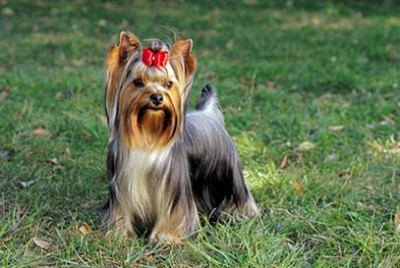
Grooming: The Yorkie sheds little hair however their long locks need brushing daily. Hair under and around the tail will need to be cleaned regularly and their teeth brushed daily. A bath is only necessary once a month.
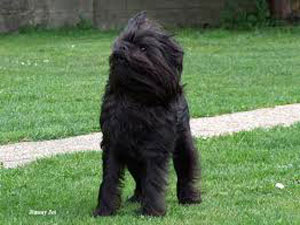
Bred down in size, the Affenpinscher was originally created in the early 17th Century to be ratters in homes before working their way up to becoming women’s companions. Today the small terrier-type dogs make a great companion with a happy and mischievous attitude.
Personality: The Affenpinscher has many terrior-like personality traits. They are lively, self-confident and carry themselves with a degree of seriousness. With a loud yap and dislike of strangers these dogs are also great watchdogs. They’re quick-tempered and fearless but affectionate with their owners.
A great dog for: Due to the aggressiveness and quick-tempered manner of the the Affen, they are not suited for small children. They require lots of training at an early age to prevent anger towards strangers and other dogs. Prepare to walk a lot because these dogs need their daily exercise. The active elderly make a great companion for this lovable breed.
Favourite activities: Exercise, walking, playing games that require exercise and intelligence. You’ll need to be gentle with these dogs to prevent damage to the legs and eyes.
Backyard requirements: With minimum shedding and a small stature the Affenpinscher makes a great indoor dog. They require only a small backyard with a daily walk however a large enough yard will provide the space for enough exercise.
Grooming: Once a week the Affenpinscher requires their coat to be brushed to remove dead hairs and debris. Their eyes and ears will also need to be checked regularly and their teeth cleaned often. Grooming should take place weekly from an early age to prevent aggressive tendencies towards the rituals. Trimming the coat every few months will make grooming easier.
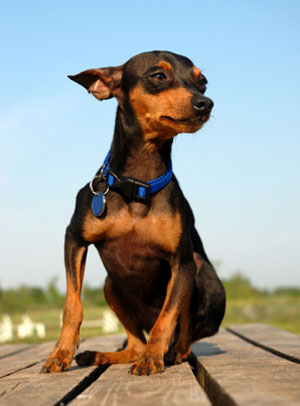
Care and exercise
A very small but very active dog, the MinPin will get most of his exercise itself around the place, but the odd game or walk will always be welcomed. Bathing, when needed, can be done in the laundry tub and the very short coat requires nothing else other than hound glove grooming, or even just a daily rub over with the hands. MinPins spending most or all of their time indoors will need regular nail filing or trimming.
Suitability
The Miniature Pinscher is a small, clean, low-maintenance breed suitable for any sized premises and most family situations. It is quite spirited and intelligent and if not trained early will try to run the household so it should be gently but firmly shown its place from day one. It is an excellent alarm or watchdog and this, with its diminutive size, make it a very good choice for older people and those living alone.
This great robust, small breed makes a wonderful companion in any situation.
The MinPin to his friends, this bold, alert, game little dog was developed in Germany around the mid-1800s as a ratter, capable of doing his work in the most confined spaces where bigger breeds could not. The German word pinscher conveys a similar meaning to terrier and the MinPin certainly has plenty of terrier characteristics. While it may look in some ways like a bonsai Dobermann, the Miniature Pinscher was bred down from the larger German Pinscher and other small, smooth-coated dogs of the day and was, in fact, a pure breed many decades before the Dobermann came into existence. With its clean lines, alertness, perky face and proud head carriage, the MinPin is particularly distinguished by its high-stepping hackney gait.
Standing about 25-30cm high at the shoulder, and averaging around 4kg, the MinPin really is a small dog, but although it comes from the Toy group it has the heart and mind of a much bigger dog. Its alertness and very keen sense of hearing make it an excellent watchdog. This breed comes in several colours black, blue or chocolate, all with tan markings, and solid red of various shades without markings. Its coat is very short, smooth and glossy.
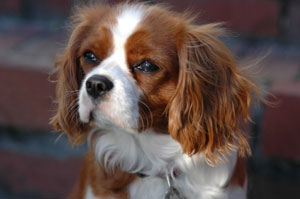
The Cavalier King Charles is a very friendly small dog breed with a happy disposition and a love for family.
Personality: Cavalier King Charles Spaniels are very friendly dogs that are affectionate and always willing to please. With a happy disposition, similar to many of the Spaniel breeds, the Cavalier loves to be included as one of the family. Happy to lie at home or easily pleased with a run at the park, these friendly dogs are more interested in being with their owners than anything else. They live for cuddles and are sweet in nature. Typically, the Cavalier lives without fear, is gentle and above all, affectionate.
Favourite activities: Being a toy dog, the Cavalier doesn’t require as much exercise as larger Spaniels, but it can be a very active dog, depending on the owner. They are happy to accompany you on a walk and love to play in the backyard. Despite their petite size, they still need a good-sized yard and regular walks to keep them stimulated. For owners interested in training activities, Cavaliers successfully compete in obedience and agility, and have achieved titles in both of these areas.
Suitable for: Perfect for a family or for someone who is looking for a companion. Whichever the case, prospective owners must know they are buying a dog that expects their love and attention. A pleasure to own, the Cavalier is a great asset to any home, although, being an indoor dog, you must be willing to share the inside of your house. Some Cavaliers may have an ideal temperament for showing, while others can have too much of a personality to behave at all times in the ring.
Watchdog qualities: As with most Spaniels, if you are after a watchdog, you should choose a different breed. Cavaliers will bark to announce the arrival of any visitors and bark at strangers, but this is the extent of their watchdog capabilities. They are extremely friendly dogs and will play with anyone who will pay them attention.
Hereditary diseases: The Cavalier is generally a very active and healthy breed. There are some known hereditary diseases they are prone to, such as mitral valve disease (MVD), slipping patella, progressive retinal atrophy (PRA) and to a small extent, hip dysplasia. Ethical breeding practices can greatly reduce the risk of these diseases. To try and prevent any problems, make sure you buy from a recommended breeder, and check out the temperament of at least one of the paren’ts. Ask to see the hip and eye certificates of the paren’ts, and ask your breeder to explain them if you don’t know what you are looking for.
The little Cavalier King Charles Spaniel certainly lives up to its reputation as a chivalrous, cavalier pooch, so beloved by its namesake, King Charles II, that the king was said to prefer the little dogs to his own courtiers.
The largest and most popular of the Toy breeds, the Cav is a small dog which makes a giant impact in any household privileged to accommodate one. The breed is known for its friendliness, unaggressive nature and adaptability.
Although the Cav is part of the Toy group of dogs, don’t be fooled by its lap dog appearance. It may be small, but it is hardy and sporty. While the Cav will happily spend quiet times alongside its guardian, this pooch also thrives on playing games and will want a good outing each day. It is this combination which has endeared the Cav to so many worldwide. It offers the affection and great cuddle factor of an adorable lap dog, but is also sturdy and strong, enjoying a good game with the kids and regular exercise.
The Cav is a great dog for just about anyone. Because of its gentle nature it is well suited to older people, yet it is also the ideal family dog, wonderful with children and full of fun. Many consider the Cav as the ideal companion dog and when you stare into this poochs deep, pool-like dark eyes, it is easy to understand why so many become hopelessly attached to them. Experts often talk about this dogs wonderful facial expressions and their amazing ability to relate to humans. They have the most wonderful eyes they speak to you through their eyes, says one
great admirer.
While the Cav is often chosen by families because of its companionship qualities and toy-breed characteristics, it is certainly not a yappy dog. Experts also emphasise that this pooch does thrive on human company and needs to be an indoor dog, not relegated to the outdoors and left on its own in the yard.
When the Bale family were looking for a dog, they settled on a Cavalier because of its convenient size and reputation for being family-friendly. Georgy, a beautiful ruby-coloured Cav, is now so much a part of the Bale household that no member of the family could imagine life without her. Georgy is an integral part of our lives now, says Lauren Bale, who, as a stay-at-home mum, spends the most time with this precious pooch. She is great with other people and I never have to worry when the kids have friends over. Shes not only easy to manage, she provides us with many laughs, not to mention many cuddles! I would definitely consider getting another Cav if anything happened to Georgy.
The Cavalier comes in four colour combinations, all as beautiful as the other: Ruby, Blenheim (white with red mask and ears and red body patches), Tricolour, and Black and Tan. While the Cav is easy to care for, its coat will need regular brushing to prevent matts from occurring. This breed also sheds, so be prepared for hair around the house, although regular brushing will minimise this.
Royal privileges
Descending from the Toy Spaniel, a popular dog amongst royalty during the 15th century, the Cavalier King Charles Spaniel was a favourite of King Charles II, from whom this pooch got its name. King Charles adored the little spaniels, often to the chagrin of his courtiers who believed the king considered the dogs more important than them.
Allowed access to all public places by order of the king, these privileged pooches lived in luxury in grand palaces and often had their own staff tending to their needs.
They were also chosen by famous artists of the time, such as Van Dyck and Titian, to appear in their works.
In the days of King Henry the Eighth, Cavs were adored by the ladies of the court and would be carried in their laps as comforters, providing warmth and comfort. The belief of the day was that the little dogs served as flea hosts, so having one on your lap meant washing was unimportant!
Daily: This breed needs attention, affection and to be included in daily activities. Shade, a good-sized backyard, fresh water and a well-balanced diet are essential.
Weekly: Cavaliers require some maintenance with regard to grooming. Requiring a brush each week, extra care needs to be taken in the feathering, as this area is prone to knot. A well-balanced diet is crucial in making sure your dog stays healthy with a shiny coat.
General Care: They need a bath every couple of weeks or once a month – don’t overdo it, unless they are particularly dirty or have rolled in something unsavoury. Use dog shampoo, as they can have sensitive skin, and rinse thoroughly. Never leave the dog wet, especially in winter. Make sure your Cavalier is wormed, vaccinated and regularly checked for ticks. Vaccination is annual and worming is done monthly if using an all in one product (for heartworm, intestinal worms, fleas, etc). Checking for ticks should be done daily if living in a tick-prone area.
Visit your state Cavalier King Charles Spaniel Club’s website for more information on the breed.
Queensland: www.cavalierclubqld.net
Victoria: www.pacificcay.com/cavalierclubvic
New South Wales: www.cavaliersnsw.com
South Australia: www.members.optusnet.com.au/~sacavalierclub
New Zealand: Tiki Cavalier King Charles Spaniel Club
The oldest Cavalier Club in New Zealand. Zone of influence is in the Northern part of the North Island.
Contact Secretary Mrs Elaine Maisey
5 Stanford Street
Albany, Auckland 1311, NZ
Ph: 09 415 4146. Email: elaine.m@xtra.co.nz
Or, for rescue details visit:
Cavalier King Charles Spaniel Rescue (Qld) Inc. : www.cavalierrescue.org.au
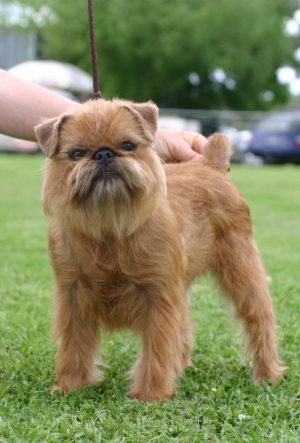
A dog with lots of personality the Griffon Bruxellois has much love and affection to give. Lauren Nethercote reports.
Developed from the King Charles Spaniel, Affenpinscher, Pug and Yorkshire Terrier, it is believed the Griffon Bruxellois originated as the rough-coated dog used as a rodent catcher in the stables of Brussels and rode on Hansom cabs as a drivers friend.
There are three varieties of Griffon: Brussels Griffon, Belgian Griffon (also known as Griffon Bruxellois) and Petit Griffon. The Belgian Griffon (Griffon Bruxellois) has a long, wiry coat with a fringe around the face, the Brussels Griffon has a wiry coat that is longer than the Belgian Griffon, and the Petit Griffon has a short, smooth coat.
However, only FCI (Fdration Cynologique Internationale) countries – which encourage and promote breeding and the use of purebred dogs – divide them into the three groups. In Australia and England, the breed is simply referred to and shown as Griffon Bruxellois. They have an almost human facial expression, which has earned them the nickname “monkey face”. Today, the Griffon Bruxellois is a wonderful family companion.
The Griffon Bruxellois is known to be extremely affectionate, loyal and cheerful, as breeder and enthusiast, Lee Pieterse, tells Dogs Life. “The Griffon Bruxellois is upbeat and playful, and, at other times, ready to cuddle and be a lap dog, she says. The perfect person for this breed is someone very gentle, who doesn’t work full-time, as they enjoy people and companionship.
The Griffon is an adaptable dog, willing to play rough and tumble with children or be a couch potato with a less mobile or older person. With lots of personality, they make fine companions.
Charming personality
The Griffon is renowned for its deep-seated loyalty, engaging personality and sweet terrier-like disposition. These dogs get along wonderfully with children, although they are not suited for kids under five years. As always, early socialisation is a must and children should be supervised. If you are older and your daily persuits are more leisurely, the dog will grow up more sedate and become a close and loving friend.
Despite its gorgeous looks, the Griffon makes a good watchdog. They are excellent for letting you know if someone arrives, Pieterse says. This breed does not adapt well to solitary life in a backyard, but loves human companionship – they are lively, curious and love everyone. The Griffon loves to be spoilt and is said to be an ideal housedog, happily spending their lives more or less indoors with the family.
A good, safe yard is required.
Not much grass is needed; just enough for toileting, Pieterse says. Whats more important is how much couch area or bed area you are prepared to share with your puppy. If you want a backyard dog, don’t buy a Griffon – they are companion animals, not backyard dogs.
The Griffon is a versatile breed and will happily become a couch potato, but when given the opportunity, they do love to romp around, playing and exploring. Mine love to romp in the pond and chase pigeons, Pieterse says. The Griffon enjoys games and going for an energetic walk daily.
Great in agility
The Griffon is extremely intelligent and responds well to training, but can be stubborn at times. They require extra patience and persistence when it comes to training, needing to be taught basics in fun, short, 10-minute bursts. They respond well to a positive-reinforcement method.
This gorgeous breeds coat comes in two varieties: the rough and smooth coat. The rough coat requires quite a lot of grooming. Most owners will need a professional groomer to take care of the coat, as they need monthly trimming around the face and nose, as well as a weekly bath. If they are show dogs, they are stripped, which requires the old/long coat to be plucked out. This allows the new coat to grow underneath.
The smooth-coat variety is relatively easy to maintain, only needing an occasional rub down with a glove and a weekly bath, with no trimming required. The Griffon is quite a healthy, robust breed and has few hereditary diseases. However, cataracts, PRA, syringomyelia, Legg Perthes Disease, hydrocephalus, patellar luxation, hip dysplasia and heart disease can appear.
A reputable breeder will be able to reduce many of these conditions if they have their breeding Griffons tested and genetically free from hereditary diseases. The lifespan of this loving breed ranges from 13 to 16 years. If you have the time and dedication to allow one of these admirable dogs into your home, you will be blessed with an extremely loving and intelligent companion for life.
For more information on the breed or to locate a breeder, contact your local canine council via website: www.ankc.org.au
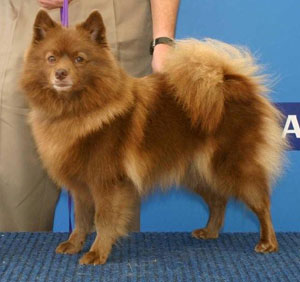
The German Spitz is becoming renowned for its great family qualities. Like the Poodle, Schnauzer and Dachshund, this active dog comes in more than one size.
Care and exercise
Like all Spitz breeds, they are not trimmed but a thorough brushing and a regular bath keeps their coats healthy. With their soft woolly undercoat and harsh, long outercoat a good brushing at least every second day is essential. They have to be brushed right down to the skin in order to keep their coat from matting. Care must be taken of nails, teeth and ears but other than that, they are an easy to care for breed. Attention must be taken from puppyhood to introduce them to obedience training, to allow them to fulfil their potential as good family members.
The German Spitz is an active little dog, and needs a reasonable amount of exercise each day, but this can easily be achieved with a walk or simply running around the backyard.
Suitability
The German Spitz, regardless of size, makes an ideal family pet for people who want a small, active and alert, profusely coated breed. With his happy, independent outlook on life and devotion to his family, he is more than happy to live with young and old alike.
The sizes range between Klein, between 23-29cm and the Mittel, 30-38cm. It is believed the German Spitz descended from Samoyed-type dogs who journeyed across Northern Europe with the Vikings. As these dogs spread over Europe, they contributed to the development of the herding and shepherd breeds. Evolving during the Middle ages in northern Germany and Holland, the German Spitz’s double coat protected him from the harsh climates. It is thought the Pomeranian was bred down from this breed. With a soft woolly undercoat and long harsh outercoat, it is covered in profuse hair except for the face, ears and legs. The high set tail is covered in long spreading hair and carried curled over the back. With its independent and happy outlook on life, the German Spitz is a devoted family member. Although not a guard dog, its watchful personality will alert its family of any visitors.
This compact breed is almost square in outline and with its brisk, effortless movement is a joy to take for a walk. They do like to play so regular exercising is easy to arrange. They are at home either on an extended walk or curled up in front of the fire. The head is typical Spitz type, wedge shaped, with a nearly flat skull and small, high set, triangular ears. The muzzle is about half the length of the head and pointed. The coat extends to an abundant frill round the shoulders and front legs.
As the German Spitz comes in a full colour range with any markings acceptable, all the pups in one litter can be different colours and choosing your particular preference can be a tough job.
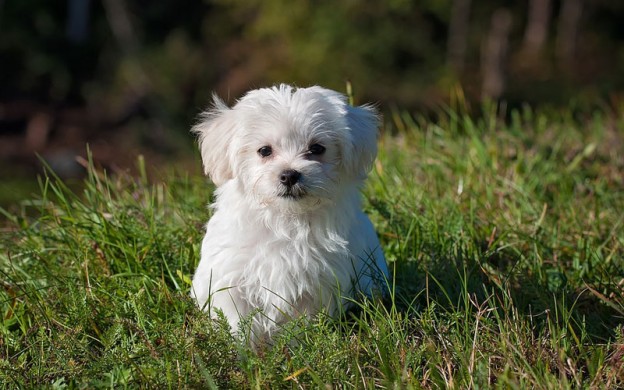
Considered one of the most ideal companion dogs,the little Maltese will amaze you with its fun personality and incredible loyalty. By Michelle Segal.
Personality: A fun-loving, loyal and very sweet breed that adores its family and will happily take all the affection it can get.
Favourite activities: Spending time with the family is top of the list for this pooch. It loves a play with its owner, catching a ball and playing with toys. The Maltese will also enjoy a daily outing, be it in the car or going for a walk.
Backyard requirements: Its small size makes the Maltese perfect for confined areas. It will enjoy a garden or courtyard to play in but will do just as well in an apartment as long as it is stimulated.
Watchdog qualities: Small this pooch may be, but the Maltese will bravely alert you instantly to anyone who approaches your property.
Hereditary diseases: The Maltese is a hardy breed with few hereditary diseases. Things to watch out for are luxating patellas (joint problems), hypoglycaemia and epilepsy. Dealing with a reputable breeder will reduce the chances of buying a pup with health problems.
Daily: A Maltese kept in coat will require a daily grooming regime to keep the coat tangle-free and healthy. Clip the coat if you do not have the time to look after a long coat. Make sure there is always fresh water available and dry the face to keep staining to a minimum.
Weekly: The Maltese is a drop-eared dog and can su$er from ear infections. Check ears regularly and see your vet if you suspect an ear irritation. Similarly, keep eyes clean of debris.
Monthly: Bathe your Maltese when necessary. Clip nails.
Other: Gastrointestinal worming every three months for adults, more frequently for puppies, heartworming and vaccinations. If you live in a high-tick area, check your dog’s body during tick season and apply anti-tick treatments if necessary. If you suspect your Maltese has tick poisoning, get to a vet immediately.
DogsLife is proudly powered by WordPress
